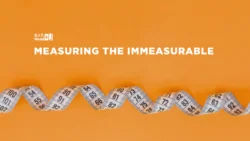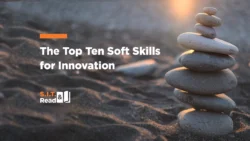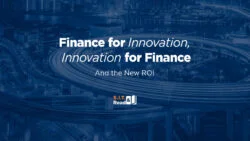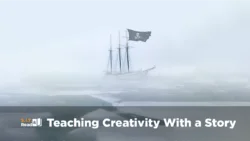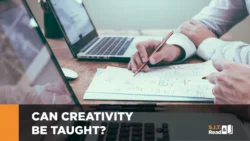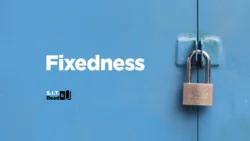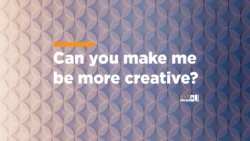Insights from Jacob Goldenberg and Others
Can creativity be taught? Here are insights from Professors Jacob Goldenberg, Rom Shrift and others on this seemingly elusive topic (from Knowledge@Wharton, August 27, 2014):
“I think there are individual differences in our propensity to be creative,” says Wharton marketing professor Rom Schrift, “but having said that, it’s like a muscle. If you train yourself, and there are different methods for doing this, you can become more creative. There are individual differences in people, but I would argue that it is also something that can be developed, and therefore, taught.”
Wharton marketing professor Jerry (Yoram) Wind has in fact taught a course in creativity at Wharton for years, and says that “in any population, basically the distribution of creativity follows the normal curve. At the absolute extreme you have Einstein and Picasso, and you don’t have to teach them — they are the geniuses. Nearly everyone else in the distribution, and the type of people you would deal with at leading universities and companies, can learn creativity.”
Does creativity need the right conditions to flourish? Jennifer Mueller, a management professor at the University of San Diego and former Wharton professor who has researched creativity, sees evidence that it does. “Every theorist that exists today on the planet will tell you creativity is an ability that ranges in the population, and I think in a given context, creativity can be shut off — or turned on, if the environment supports creativity.”
In whatever the sector or discipline — product development, exploitation of networks, music or education — creativity shares certain traits, experts say. Jacob Goldenberg, professor of marketing at the Arison School of Business at the IDC Herzliya in Israel, says creativity has more than 200 definitions in the literature. “However, if you ask people to grade ideas, the agreement is very high,” he notes. “This means that even if it is difficult to define creativity, it is easy to identify it. One of the reasons why it is difficult to define is the fact that creativity exists in many different domains.” Still, he says: “Most creative ideas share a common structure of being highly original and at the same time highly useful.”
In Inside the Box: A Proven System of Creativity for Breakthrough Results, Goldenberg and co-author Drew Boyd make the case that all inventive solutions share certain common patterns. Working within parameters, rather than through free-associative brainstorming, leads to greater creativity, the book says. This method, called Systematic Inventive Thinking, has found application at Procter & Gamble and SAP, among others. “We shouldn’t confuse innovation and creativity,” Goldenberg says. “Creativity refers to the idea, not to the system [product, service, process, etc.] that was built around it. For example, online banking is a great innovation, but the idea [of using the Internet to replace the branch] was not creative. It was expected years before it was implemented.”
Similarly, he adds, “cell phone technology is one of the most innovative developments, but the need was defined years before, and we just waited for the technology. In my view, a creative idea that is still changing our lives is the concept of letting users develop the software they need on a platform [that a particular] firm sells: the apps concept. This means that consumers develop and determine the value of the smartphone and tablets.”
This example, Goldenberg says, fits one of the templates for creativity described in Inside the Box: “Where you subtract one of the resources” — such as engineers and marketers — “and replace them with a resource that exists inside a closure (box), in this case your consumers.”
Schrift has used a different template from Inside the Box in his classes: The idea of building a matrix of characteristics of two unrelated products, and creating new dependencies. Such examples, he says, include an air freshener that changes scent every 10 minutes (remixing the concepts of time and fragrance), or a gym with a fee that is structured to increase if you don’t work out enough (fitness and incentive). “A lot of the time, looking for a new dependency gives you a creative idea,” Schrift notes.
Creativity on demand
Schrift’s class isn’t exactly Wharton’s version of “Rocks for Jocks.” During the semester, students learn different methods for approaching creativity with head scratching titles such as “The Attribute Dependency Template” and the “Task Unification and Closure Principle.” There’s a hefty reading list, as well as a major group project where students take on a real-world problem in partnership with a major company.
“I think I’m definitely more creative than I was before because I just can just think about it in a different way,” says Nicole Granet, a senior majoring in management. “I don’t feel like I need to just close my eyes, listen to some relaxing music, maybe something will come to me. I feel like I’m much more in control of being able to produce these ideas that can really make a big change…sort of be ‘creative on demand.’” Granet is starting a job in consulting after she graduates, where, ideally, she’ll help companies be more productive, and creativity ‘on demand’ will definitely be an asset.
Gerard Puccio hears from employers all the time about how much they value that type of skillset. Puccio directs Buffalo State’s International Center for Studies in Creativity, which, in the late 1960s, became the first school in the country to offer classes on the subject.
He says the discipline has evolved over the years as the challenges we face have become more complex. “Life has become much more complicated, and as a result, we need to enhance the level of complexity of our own thinking, to be able to deal better with complex problems…problems that don’t have easy answers,” says Puccio. He adds that many of these creative skills are actually innate, and perhaps just need a little coaxing.
“It is a human characteristic. It is the reason why we’ve survived through the millennia. It is because…our competitive advantage is creative thinking. We are not the fastest, we can’t fly, we don’t naturally camouflage ourselves, we can only exist in certain climates. So, the human species has evolved to be creative, and in fact, that’s what has helped us to sustain ourselves over time,” says Puccio.
Design it out
Some of us, of course, are still going to be more creative than others.
Example #1: David Ludwig.
He’s a celebrated classical composer and a member of the composition faculty at Philadelphia’s Curtis Institute of Music, one of the nation’s top schools. He’s the type of guy who gets inspiration for melodies walking around the grocery store. But even with all of his innate ability, Ludwig is completely on board with the idea that creativity can be thought of as a skill to hone, and that understanding constraints and attributes is crucial to creating something new and useful.
“We start out very often with a commission,” he says, “and what I do is, I start making my own constraints. What is the piece about? What motivates it? Why is it meaningful? Then we go from there. We start with the biggest questions first, and go to the smallest.”
Ludwig says he often gets his students thinking about how best to approach creation of a new work by using a simple exercise.
“If I gave you an assignment and said draw a house…on a piece of paper. The first thing you would do, the first thing anyone has ever done when I’ve asked them to do that, is they start with the box and the roof. The frame. Always the frame. No one starts with the window and the TV in the living room in the background. No one starts with the little chimney with the smoke coming out of it. “That is [an] unhindered, creative act. An unconscious creative act and we naturally put limitations on ourselves.” Or, put another way, “We can’t order everything on the menu when we really create something. We have to really design it out.”
But what about just letting your mind wonder? Everyone can point to those random Eureka! moments, either in their work or personal life, when greatness strikes without any effort.
Professor Schrift says he does occasionally get pushback from people who argue the best ideas come when they aren’t pressing for one.
“If for some people, jumping on the trampoline and listening to strange music works? Keep doing that,” he says with a laugh. “But having said that, we offer another tool. We can’t always take a passive approach and wait for us to get this ‘aha moment’ in the shower.”
(This interview first aired on WHYY’S The Pulse.)
